
The 2024 Mitsubishi Triton landed with a thud in Australian showrooms early in 2024. The general consensus was that it was essentially bigger and better than its predecessor in just about every way. But just how different is it from the previous Triton?
JUMP AHEAD
Dimensions
The Mitsubishi Triton’s dimensions remained remarkably similar since the introduction of the ML Triton in 2006 up until the 2024 model's predecessor – especially the 3.0-metre wheelbase on the MQ-MR Triton that was built in the same Triton production facility just outside Bangkok, Thailand.
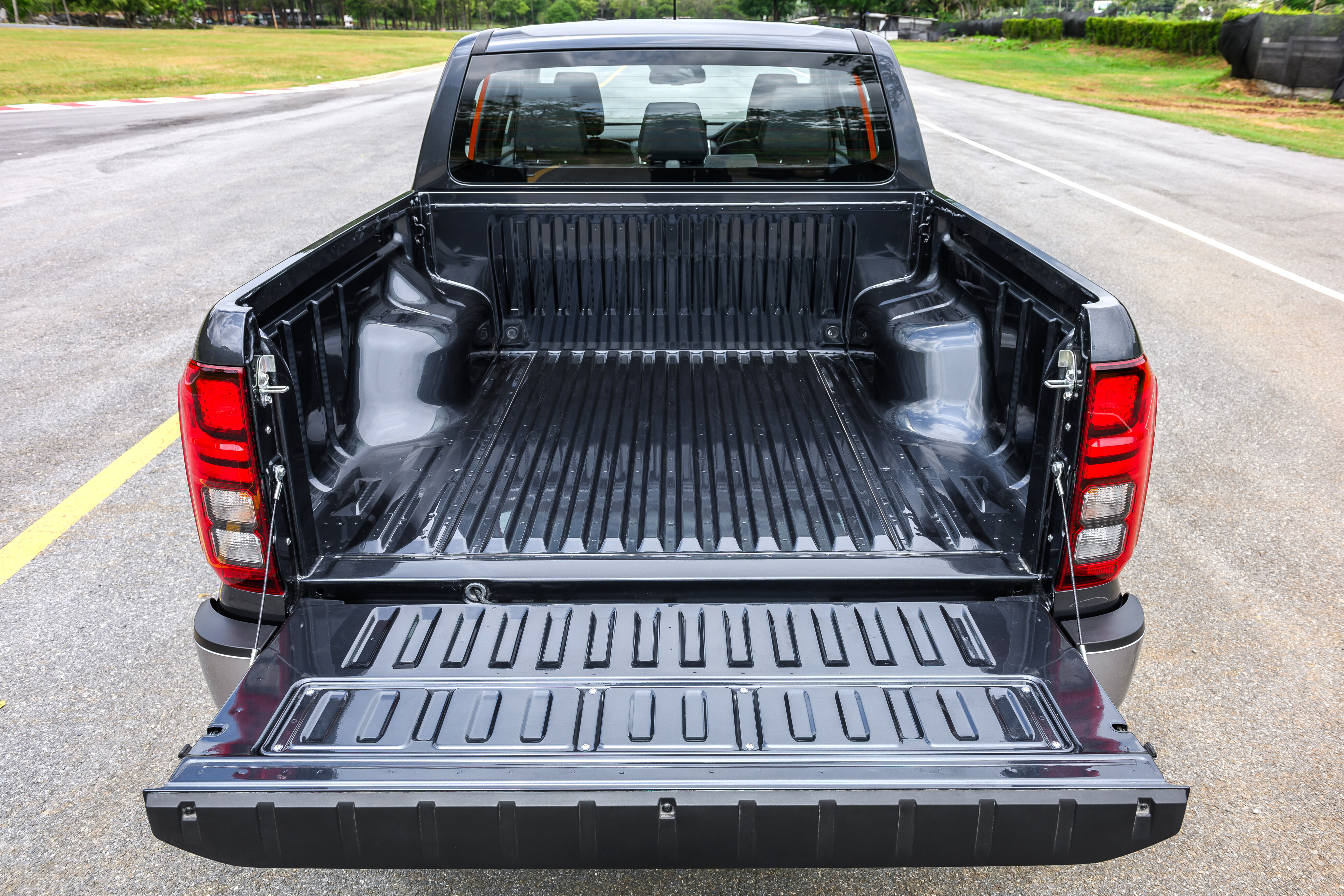
However, the 2024 model has a fresh frame underneath with major changes. It has a wider body, a broader track and rides on a longer wheelbase, but despite this the Triton still remains one of the more compact utes in the segment.
With a larger tub for dual-cab variants (it’s 35mm longer and measures 1545mm at its widest point), the new Triton is able to fit a European pallet behind its wheel-arches. A flattened and grip-taped area on the bumper gives a more ergonomic area to stand and load objects.
| Dimensions (4x4 Dual Cab models) | 2024 Mitsubishi Triton | Old Triton dual cab |
|---|---|---|
| Length | 5320mm | 5305mm |
| Width | 1865mm | 1815mm |
| Height | 1795mm | 1795mm |
| Wheelbase | 3130mm | 3000mm |
| Tray length/width | 1555/1545mm | 1520/1470mm |
| Ground clearance | 222mm | 220mm |
Chassis and towing
Mitsubishi has massively improved the new Triton’s frame, with more high-tensile steel used in the construction.
For 2024, the Triton is now certified to tow 3500kg braked loads, matching segment leaders such as the Ford Ranger, Volkswagen Amarok and Toyota HiLux. By raw figures, the new Triton promises a a 400kg – or 13 per cent – improvement over the old car. The vehicle's maximum payload has also increased. In GSR trim, for example, the 2024 Triton has a payload capacity of 1030kg, eclipsing the existing 901kg offered by the previous GSR iteration.
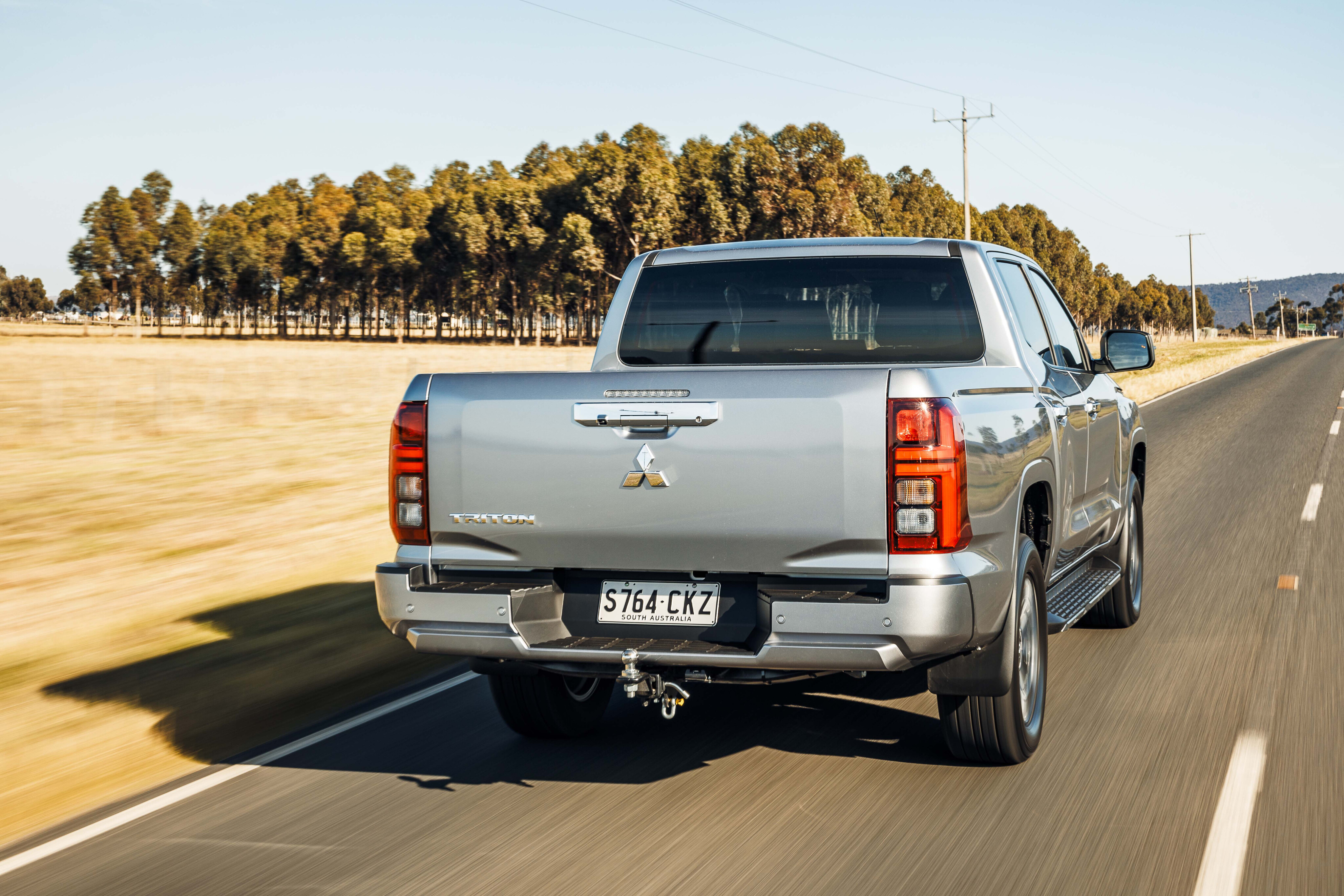
This is partially down to improved power and frame strength, but also due to Mitsubishi’s ability to keep body weight under control. The new Triton’s actual cabin is lighter than the outgoing vehicle thanks to the use 1180MPa high-tensile steel in its construction – though Mitsubishi is yet to confirm the ute’s final kerb weights.
Keeping the tyres in contact with the road are larger diameter dampers that boast 20mm more front suspension stroke thanks to a higher upper mount for the double wishbone suspension. Adding to the refinement, the Triton now gets electric power-assisted steering for the first time, which ought to improve refinement and steering precision over the old hydraulic setup.
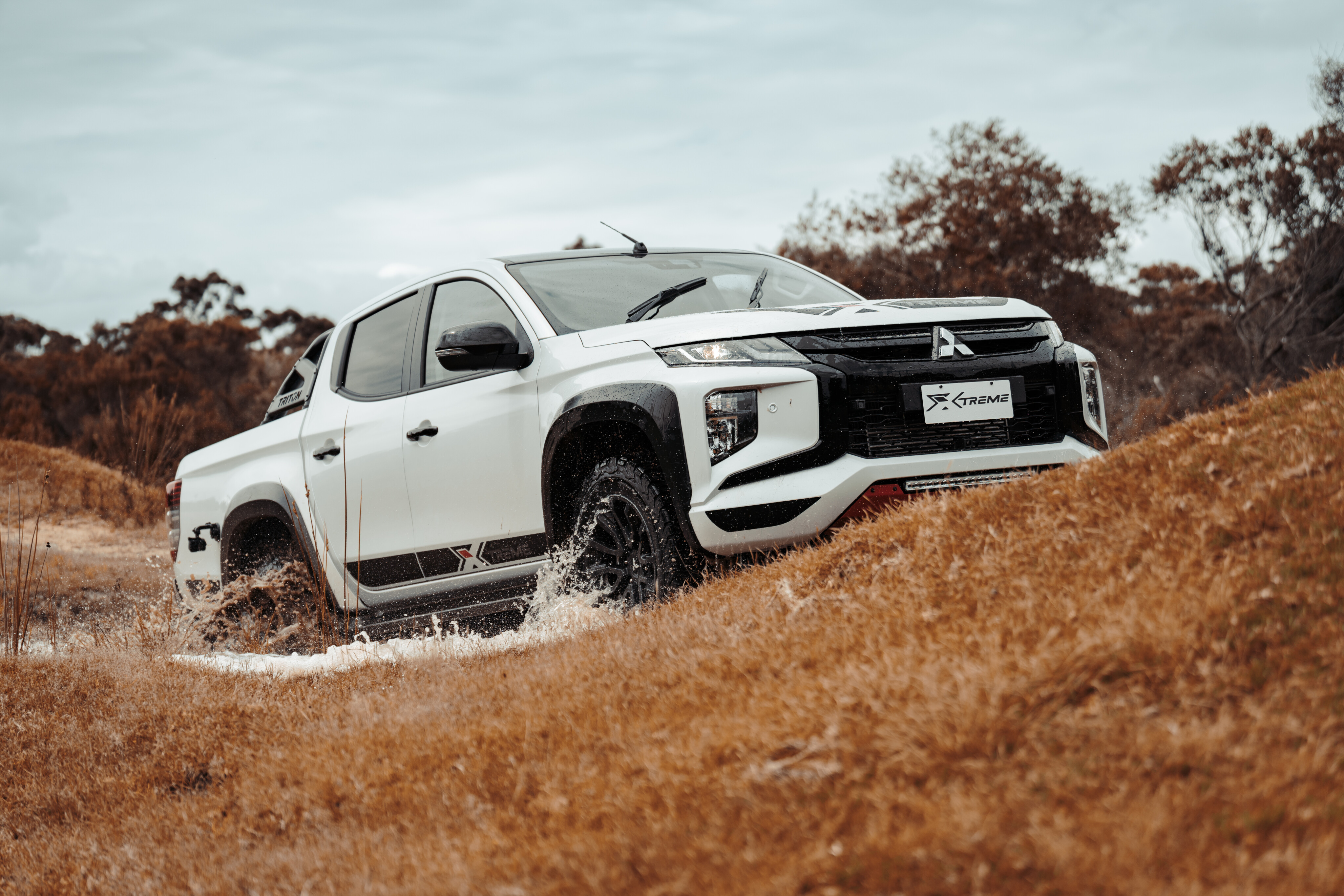
Engines
The new Triton has an extra turbo strapped to what is a very similar 2.4-litre diesel four-cylinder engine.
It was automatic-only at launch, but lower grades are now offered with a six-speed manual with cable, rather than linkage, actuation. The extra turbo, new injectors and other revisions see the Triton’s outputs jump 17kW and 20Nm.
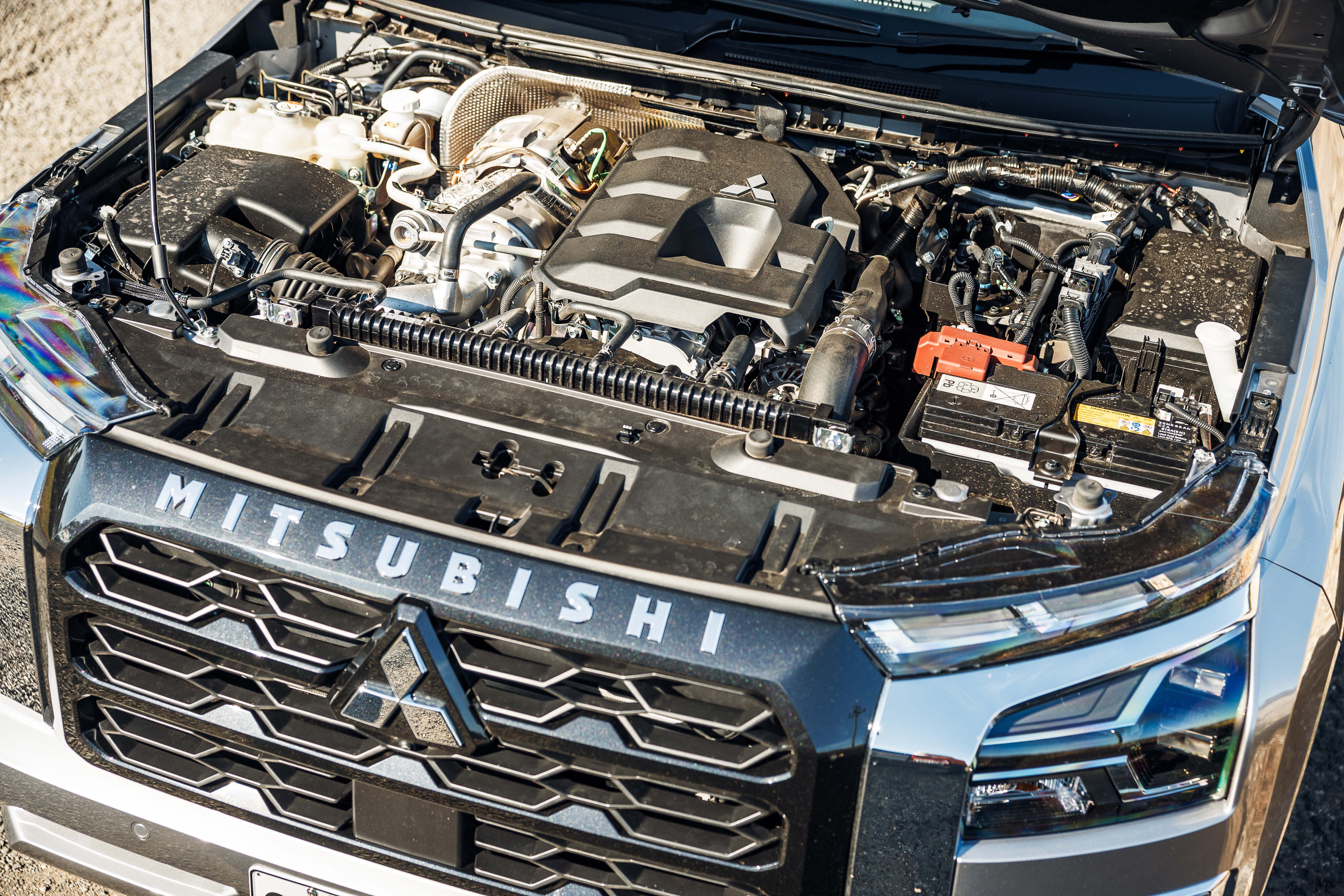
Power levels are now in line with the Toyota HiLux, though torque lags behind best-in-class than the Ranger/Amarok’s 600Nm V6
Under the bonnet of the new Triton is a 2.4-litre twin-turbo diesel four-cylinder producing 150kW/470Nm, mated to either a six-speed automatic or a revised six-speed manual transmission.
| Specifications | 2024 Mitsubishi Triton GSR | 2023 Mitsubishi Triton GSR |
|---|---|---|
| Engine | 2.4L twin-turbo diesel four cyl | 2.4L single-turbo diesel four cyl |
| Transmission | Six-speed auto/man | Six-speed auto/man |
| Power | 150kW | 133kW |
| Torque | 470Nm | 430Nm |
| ADR 81/02 fuel use | 7.7L/100km | 8.6L/100km |
| Kerb weight | 2170kg | 1999kg |
| Payload | 1030kg | 901kg |
| Towing Capacity (braked) | 3500kg | 3100kg |
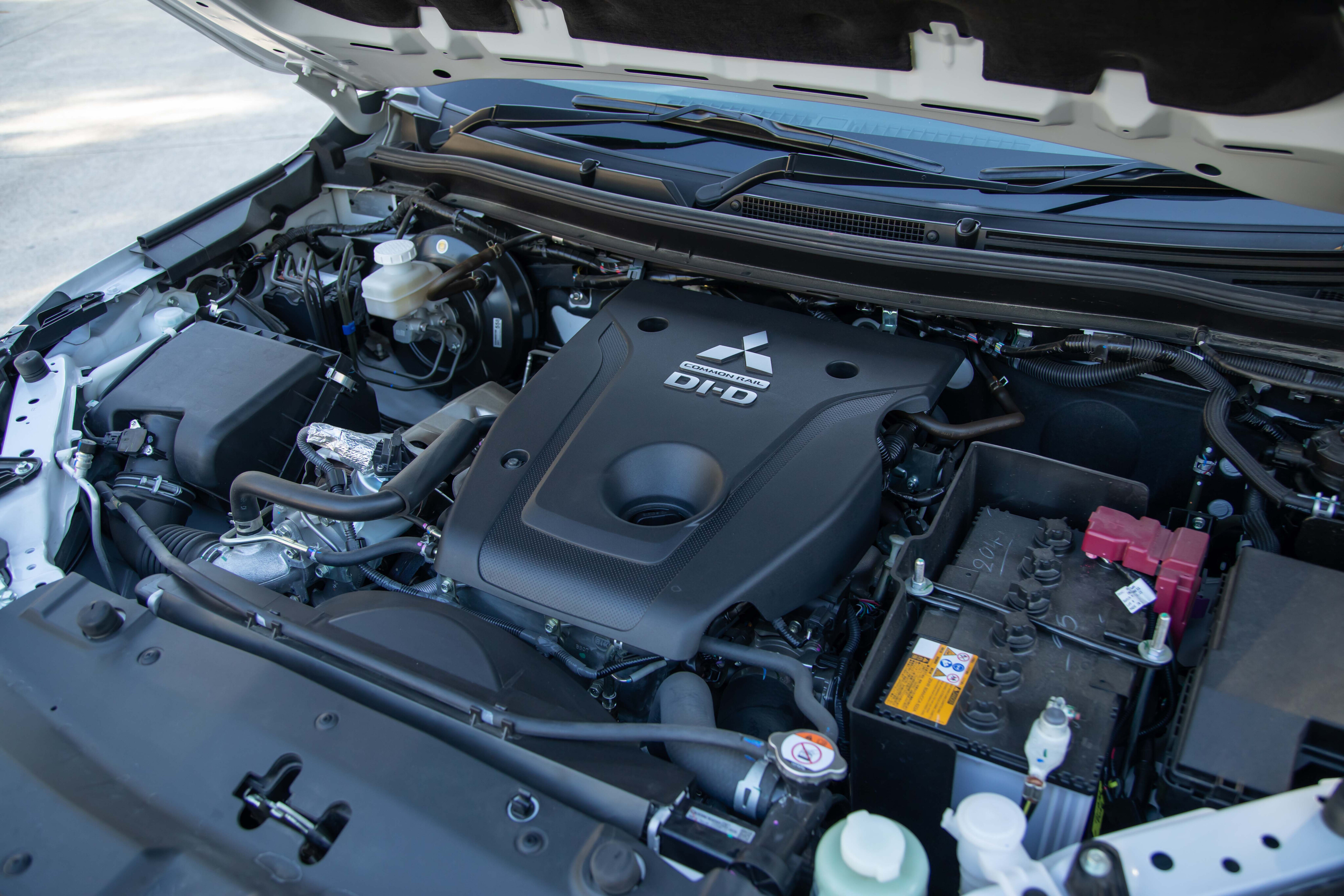
Interior and cabin design
The old Triton’s dated interior is replaced by a new vertical Outlander-inspired design with a whole lot more digitisation.
A 9.0-inch touchscreen features in the centre of the new Triton’s dash (replacing a very Supercheap Auto-looking 7.0-inch item) with satellite navigation, traffic sign recognition, wireless Apple CarPlay (and wired Android Auto). Connected-vehicle services such as ute status, and remote locking via a smartphone application are new, too – but the last feature is unlikely for Australia initially. Still, it’s a big upgrade on the old Triton’s analogue chic.
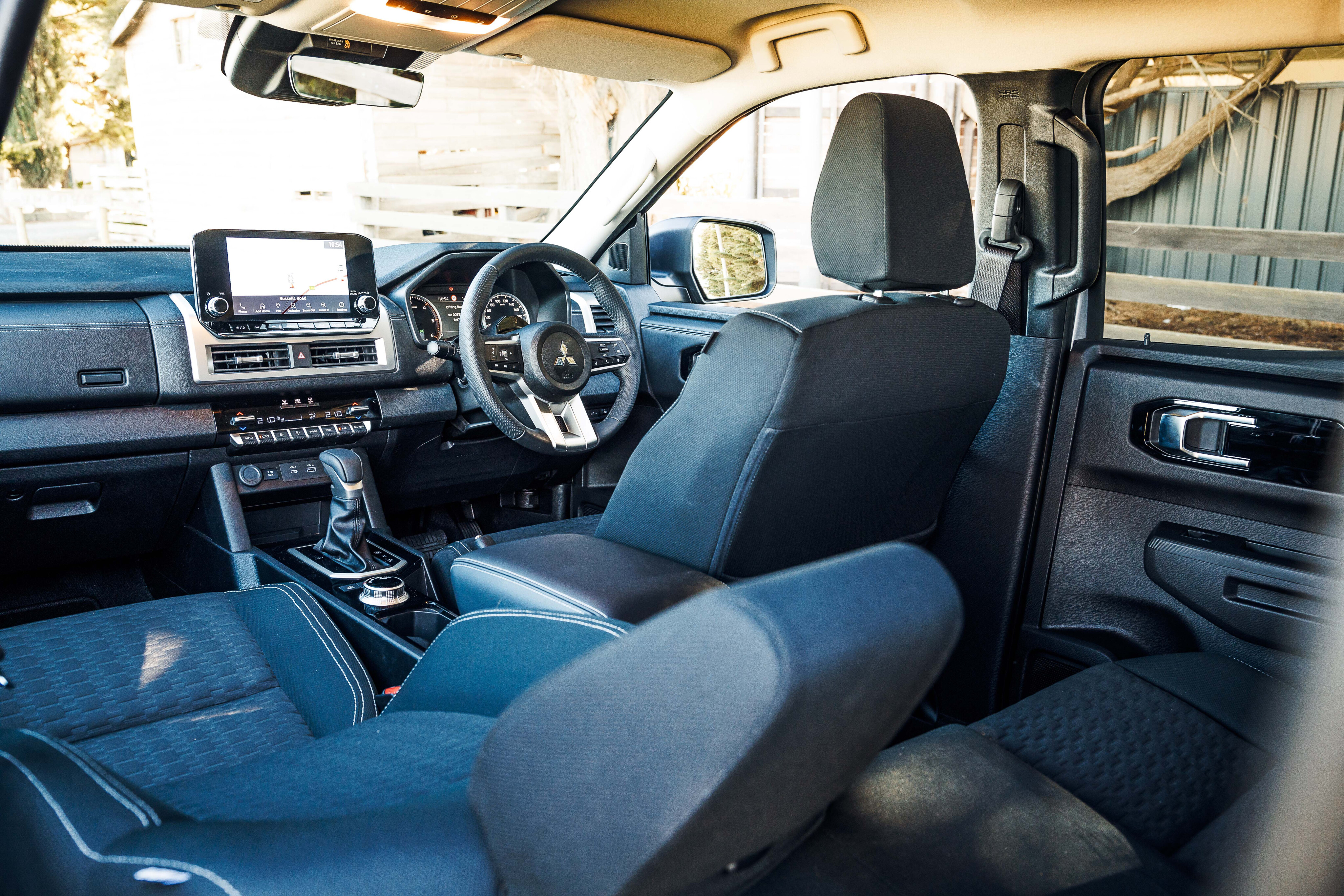
The front seats have been totally overhauled and are now comfortable and supportive, replacing the flat and firm items from before.
Adding length to the wheelbase improves rear seat occupant space, which is also helped by the 50mm wider cabin of the new, squarer Triton. Higher quality materials, borrowed from the Outlander, add to an enhanced sense of luxury within the new ute. Rear seat passengers retain the roof-mounted air vents and high-spec trims get USB charge points as well as a fold-out centre armrest.

Pricing
The 2024 Triton is, as expected, more expensive than the outgoing model.
Comparatively, the previous-gen Triton GSR cost $56,490 before on-road costs, while the MY24 GSR costs $63,840 before on-road costs (that's a difference of $7350). Not surprising considering all the improvements and its upmarket cabin.
| 2024 Mitsubishi Triton variant | MY24 pricing (before on-road costs) | MY23 pricing (before on-road costs) |
|---|---|---|
| GLX+ 4x4 club-cab pick-up | $50,340 | $45,440 |
| GLX 4x4 dual-cab pick-up | $50,940 | $43,690 |
| GLX+ 4x4 dual-cab pick-up | $53,290 | $47,190 |
| GLS 4x4 dual-cab pick-up | $59,090 (Leather + $1500) | $51,490 / $54,940 |
| GSR 4x4 dual-cab pick-up | $63,840 | $56,490 |

COMMENTS